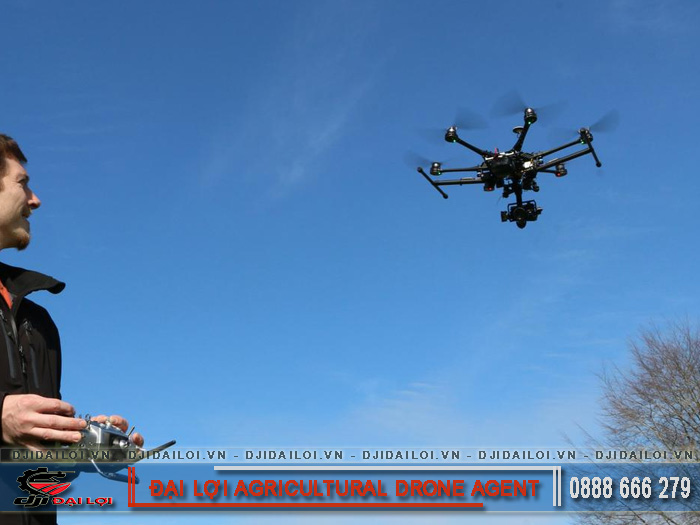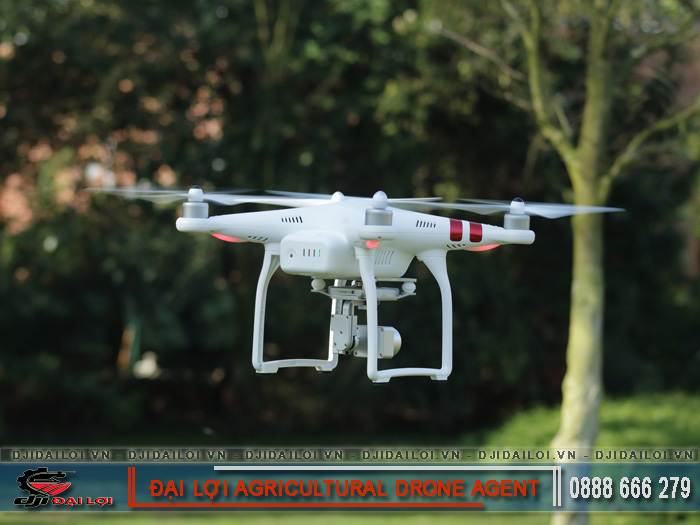
Reasons why users want to know whether flying a flycam is prohibited
As flycam become increasingly popular - from amateur users, travelers to commercial operators - their operation in Vietnam has led to many legal and security issues. Users often ask: “Is flying a flycam prohibited?” because there is conflicting information, for example: some people say small drones are allowed, but there are still cases of confiscation or fines. In reality, authorities in Vietnam are increasingly tightening control over flight zones, permits, and no-fly areas.
Therefore, going deeper into whether flycams are prohibited, under what conditions, and how to avoid legal risks is very necessary so users know their rights and responsibilities and avoid being surprised when using the device.
Criteria determining whether flying a flycam is prohibited
To answer “Is flying a flycam prohibited”, it is necessary to understand the key criteria that determine whether it is banned or requires a permit. Below are the main factors:
- Flight permit procedures: In Vietnam, each flight (except some exceptional cases) usually requires a permit from the Ministry of National Defense or relevant authorities.
- Prohibited or restricted areas: There are strictly controlled zones such as around airports, military bases, consular areas, and border regions.
- Type of use, weight, and equipment level: Whether the flycam is for amateur or commercial use, its weight, and flight altitude all affect whether it requires a permit or is banned. For example, the 2025 regulation states that devices under 250 g for personal use may be exempt from a permit.
- Compliance with safety and notification regulations: You must follow distance, altitude, and flight conduct rules, avoid crowds and sensitive zones. Violations can lead to fines or bans.
Thus, answering “Is flying a flycam prohibited” is not simply “yes or no” but depends on several factors: device type, location, purpose, permit procedures, and compliance. Failure to meet these criteria can lead to bans or penalties.
Risks when flying a flycam in real-life situations
According to 2025 updates in Vietnam:
- “No-fly zones” and “restricted zones” have been announced by the Ministry of National Defense.
- Some sources state: “Drones under 250 g for recreational purposes may not require a permit.”
- Penalties range from VND 1-2 million for unpermitted flights, VND 20-30 million near airports, up to VND 30-40 million if endangering aircraft.
Below are specific cases to help you understand when a flycam is considered “prohibited” or “strictly controlled.”
1. Flying in urban, airport, or military zones
If you fly a flycam in densely populated urban areas or near airports or military zones without a permit:
- Violates procedures
- Flies in prohibited or restricted zones
→ High risk of being fined or having your device confiscated
2. Flying recreationally in rural or outdoor areas
If you take a flycam to rural areas, fly low, away from sensitive zones, and don’t film military/government sites:
- Based on experience, less likely to be inspected
- However, this doesn’t mean being exempt from the law - violations can still occur if entering restricted zones
3. Commercial flying (filming, advertising)
If you use a flycam for commercial purposes:
- The permit procedure is more complex
- Without a permit, the flight is considered illegal → high risk
4. Light flycam (< 250 g) for personal use
The 2025 law update states: devices under 250 g purely for fun may fly without a permit. However, they must still comply with altitude, zone, and safety restrictions, avoiding residential areas, factories, or military sites.
Comparison summary
|
Situation
|
Procedures
|
Legal risk
|
“Is flying a flycam prohibited?”
|
|
Flying near airports, military zones, crowded cities without a permit
|
Permit required
|
Very high
|
May be prohibited or fined
|
|
Flying in remote areas with small devices, following area rules
|
Exempt or simple procedure
|
Low
|
Rarely prohibited
|
|
Commercial flying without a permit
|
Business and flight permits required
|
High
|
May be banned or heavily fined
|
|
Flying sub-250 g recreational flycam, permitted if outside sensitive zones
|
Light or exempt procedure
|
Conditional
|
Almost not prohibited if compliant
|
Thus, whether flying a flycam is prohibited depends greatly on flight context and legal compliance. Not obtaining a permit or flying in restricted areas is the main reason for being banned or fined.
Benefits and risks of complying or violating flycam regulations
Benefits when following regulations
- Legal, worry-free flying
- Maximized use for creativity, travel, business
- Maintained personal or business reputation
Risks when violating regulations
- Fines or confiscation of the flycam
- Flight ban or being placed under supervision
- Reputation damage, especially for commercial purposes
Common penalties
- Administrative fines from VND 1-40 million
- Confiscation of the device without return
- Legal liability if flight affects security or aviation safety

Recommended actions by usage purpose
1. Flying a flycam for personal travel
- Use a lightweight device under 250 g, avoid filming crowds
- Don’t fly near airports, historical sites, religious or military areas
2. Using a flycam to film vlogs or social media videos
- For personal channels → check for restricted zones
- If commercial elements are involved → apply for permits
3. Flying a flycam for commercial purposes (advertising, film, events)
- Submit flight applications at least 7 days before
- Prepare insurance and image rights documents
4. What beginners should note
- Practice in open areas without signal obstruction
- Learn restricted zones and device conditions carefully
Legal checklist and technical parameters to know
Key figures
- Device weight: Under 250 g devices often face lighter procedures.
- Flight altitude: Common rule—max around 120 m above ground.
- Restricted distance: Around 15 km from runway ends and 5 km laterally (2025 update).
- Permit time: At least 7 working days before flight.
- Penalties: VND 1-2 million for unpermitted flights, 20-30 million near airports, 30-40 million for major violations.
Pre-flight legal checklist
- Check “no-fly” and “restricted” maps on the Ministry of National Defense portal.
- Determine flight type: personal/recreational or commercial.
- Check device specs (camera, filming)—if filming, review aerial filming permits.
- Prepare documents: passport copy, device details, flight map, purpose, date/time, expected altitude.
• Apply for permits if needed—submit at least 7 days in advance.
- Follow rules: maintain visual line of sight, avoid crowds, don’t fly in rain/wind, avoid airports/military areas.
- Carry proof of permit or documentation for inspection.
- For commercial use: ensure insurance, filming rights, image transfer compliance.
- After flight: store footage, comply with authority requests if any.
Legal references
- Decision 18/2020/QĐ-TTg - establishes prohibited and restricted UAV zones.
- Decree 36/2008/NĐ-CP - basic UAV management framework.
Therefore, for the question “Is flying a flycam prohibited?”, the answer is: not absolutely prohibited, but if you fly without permission, in restricted zones, or for commercial purposes without reporting, it may be banned or heavily penalized. Caution is mandatory.
Management trends and expert advice
1. Flycam management trends in Vietnam
- Stricter control through digital no-fly maps
- Draft laws for lightweight devices under 250 g
2. Expert advice for safe and legal flying
- Always stay updated with new legal information
- Use apps showing restricted zones before flight
- Work with licensed units for commercial filming projects
In conclusion, when analyzing “Is flying a flycam prohibited,” it shows that flying a flycam is not completely banned, but failing to comply with permit procedures, flying in restricted zones, or using it commercially without approval carries a high risk of being banned, fined, or losing the device. Following the regulations, choosing proper scenarios, and preparing thoroughly will help you operate your flycam safely and effectively.

